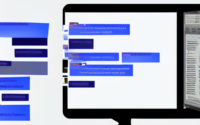Using Digital Twins to Optimize Production in Manufacturing Plants
Using Digital Twins to Optimize Production in Manufacturing Plants
Introduction to Digital Twins:
Digital twins are virtual representations of physical objects or systems. In the context of manufacturing plants, digital twins are digital replicas of the physical assets and processes in the plant. These digital replicas are continuously updated with real-time data from sensors, machines, and other sources, allowing for a comprehensive and dynamic representation of the plant’s operations.
Benefits of Using Digital Twins in Manufacturing:
There are several benefits to using digital twins in manufacturing plants to optimize production. One of the key advantages is the ability to simulate and predict the behavior of the plant under different conditions. This allows for the identification of potential bottlenecks, inefficiencies, and maintenance needs before they occur, enabling proactive decision-making to improve overall efficiency and productivity.
Implementing Digital Twins in Manufacturing Plants:
To implement digital twins in manufacturing plants, several steps need to be followed. The first step is to create a digital model of the plant, including its assets, processes, and connections. This model should be continuously updated with real-time data to ensure its accuracy and relevance. The next step is to integrate sensors and other data sources to feed information into the digital twin, providing a holistic view of the plant’s operations.
Data Collection and Analysis:
Data collection is a critical aspect of using digital twins in manufacturing plants. Sensors, IoT devices, and other data sources collect real-time data on various aspects of the plant, such as machine performance, energy consumption, and temperature levels. This data is then fed into the digital twin for analysis and visualization. Advanced analytics techniques, such as machine learning and predictive modeling, can be applied to the data to extract valuable insights and optimize production processes.
Optimizing Production Processes:
Once the digital twin is set up and data is being collected and analyzed, the next step is to use the insights gained to optimize production processes. This can involve identifying and addressing bottlenecks in the production line, predicting maintenance needs to prevent downtime, and adjusting production schedules based on real-time demand forecasts. By leveraging the capabilities of digital twins, manufacturing plants can achieve higher efficiency, lower costs, and improved quality.
Real-World Examples of Digital Twins in Manufacturing:
Several manufacturing companies have successfully implemented digital twins to optimize their production processes. For example, General Electric uses digital twins in its gas turbine manufacturing plants to simulate the performance of turbines under different operating conditions, leading to improved efficiency and reliability. Another example is Siemens, which uses digital twins to monitor and optimize the production of its industrial equipment, resulting in reduced maintenance costs and downtime.
Challenges and Considerations:
While digital twins offer significant benefits for optimizing production in manufacturing plants, there are also challenges and considerations to keep in mind. One of the main challenges is the initial investment required to set up the digital twin infrastructure, including sensors, data storage, and analytics capabilities. Additionally, ensuring data security and privacy is crucial when collecting and analyzing sensitive production data. It is important to have robust cybersecurity measures in place to protect the digital twin from potential threats.
Conclusion:
Digital twins have emerged as a powerful tool for optimizing production in manufacturing plants. By creating accurate digital replicas of physical assets and processes, plant managers can gain valuable insights into their operations and make data-driven decisions to improve efficiency and productivity. While there are challenges to overcome, the benefits of using digital twins far outweigh the costs, providing a competitive edge in an increasingly digital and data-driven manufacturing landscape.


